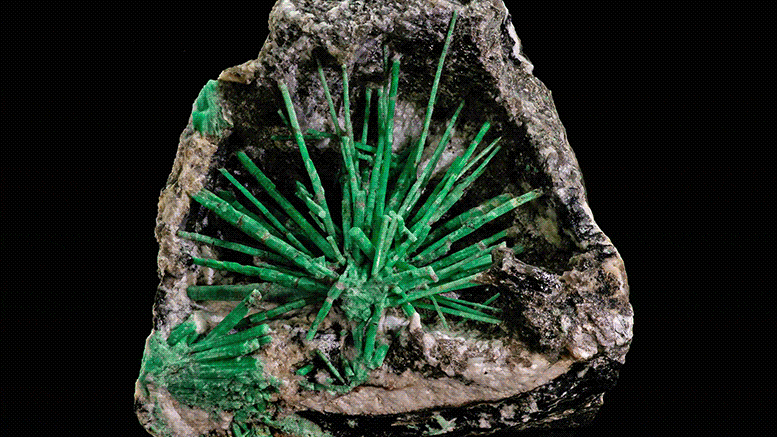
A newly completed 15-year study details the origins and diversity of every known mineral on Earth.
An innovative new perspective on mineralogy, findings rank amongst the field’s most important in the last century.
Scientists decipher and catalog the diverse origins of Earth’s minerals; will inform models of life’s history, help find new minerals, habitable planets, and extraterrestrial life.
- Crushed, zapped, boiled, baked, and more: Nature used 57 recipes to create Earth’s 10,500+ ‘mineral kinds’
- Pyrite (“Fool’s Gold”) formed in 21 ways — the most of any mineral; Diamonds formed in nine ways – from outer space to deep Earth
- Water helped 80+% of mineral species to form; Biology had a direct or indirect role in ~50%; One-third formed exclusively through biological processes
A landmark 15-year study details the origins and diversity of every known mineral on Earth, a landmark body of work that will help reconstruct the history of life on Earth, guide the search for new minerals and ore deposits, predict possible characteristics of future life, and aid the search for habitable planets and extraterrestrial life. The research was led by the Carnegie Institution for Science.
“This work fundamentally changes our view of the diversity of minerals on the planet.” — Robert Hazen
In twin papers published today (July 1, 2022) by American Mineralogist and sponsored in part by NASA, Carnegie scientists Robert Hazen and Shaunna Morrison detail a novel approach to clustering (lumping) kindred species of minerals together or splitting off new species based on when and how they originated.
Once mineral genesis is factored in, the number of “mineral kinds” — a newly-coined term — totals more than 10,500, a number about 75% greater than the roughly 6,000 mineral species recognized by the International Mineralogical Association (IMA) on the basis of crystal structure and chemical composition alone.
“This work fundamentally changes our view of the diversity of minerals on the planet,” says Dr. Hazen, Staff Scientist with the Earth and Planets Laboratory, Carnegie Institution for Science, Washington DC.
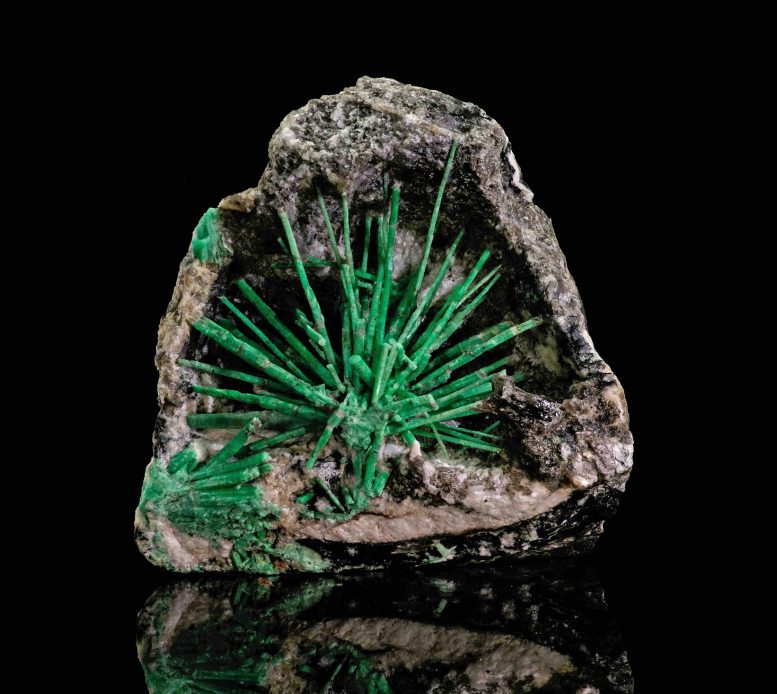
Beryl, the most common mineral containing the element beryllium comes in many beautiful colors such as emerald — its common name. The innovative approach to classification includes lumping several species with the beryl structure into a single “root mineral kind” while splitting off several individual “natural kinds” based on their unique formational environments, which create distinct red, pink, blue, and green “kinds.” Credit: ARKENSTONE/Rob Lavinsky
80% of Earth’s minerals were mediated by water
“For example, more than 80% of Earth’s minerals were mediated by water, which is, therefore, fundamentally important to mineral diversity on this planet. By extension, this explains one of the key reasons why the Moon and Mercury and even Mars have far fewer mineral species than Earth.”
“The work also tells us something very profound about the role of biology,” he adds. “One-third of Earth’s minerals could not have formed without biology – shells and bones and teeth, or microbes, for example, or the vital indirect role of biology, such as by creating an oxygen-rich atmosphere that led to 2,000 minerals that wouldn’t have formed otherwise.”
“Each mineral specimen has a history. Each tells a story. Each is a time capsule that reveals Earth’s past as nothing else can.”
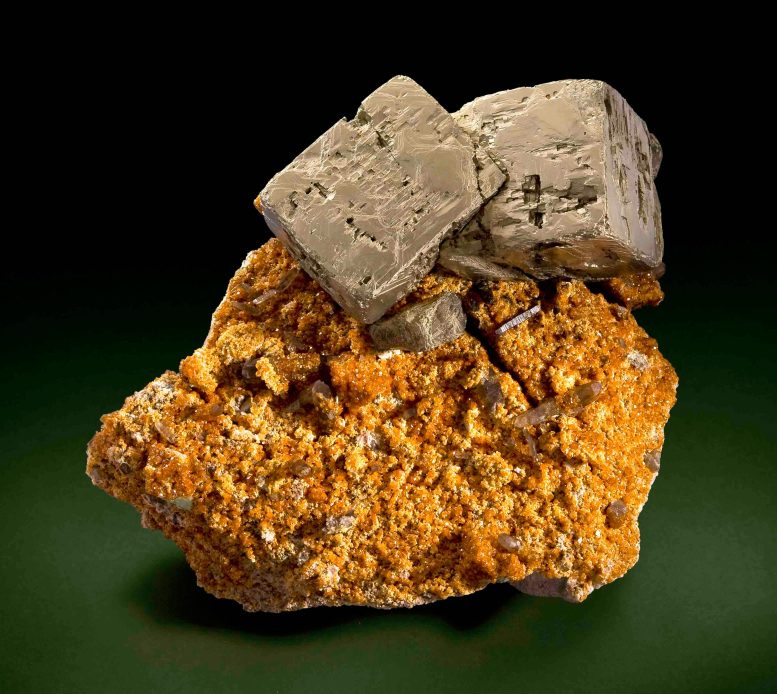
Nature has used 21 different ways over the last 4.5 billion years to create pyrite (aka Fool’s Gold) — the mineral world’s champion of diverse origins. Pyrite forms at high temperature and low, with and without water, with the help of microbes and in harsh environments where life plays no role whatsoever. Credit: ARKENSTONE/Rob Lavinsky
40% of Earth’s mineral species formed in more than one way
Nature created 40% of Earth’s mineral species in more than one way, according to the paper. For example, both abiotically and with a helping hand from cells – and in several cases used more than 15 different recipes to produce the same crystal structure and chemical composition.
Of the 5,659 recognized mineral species surveyed by Hazen and colleagues, nine came into being via 15 or more different physical, chemical and/or biological processes — everything from near-instantaneous formation by lightning or meteor strikes, to changes caused by water-rock interactions or transformations at high pressures and temperature spanning hundreds of millions of years.
And, as if to show she has a sense of humor, Nature has used 21 different ways over the last 4.5 billion years to create pyrite (aka Fool’s Gold) — the mineral world’s champion of diverse origins. Pyrite forms at high temperatures and low, with and without water, with the help of microbes and in harsh environments where life plays no role whatsoever.
Composed of one part iron to two parts sulfide (FeS2), pyrite is derived and delivered via meteorites, volcanos, hydrothermal deposits, by pressure between layers of rock, near-surface rock weathering, microbially-precipitated deposits, several mining-associated processes including coal mine fires, and many other means.
To reach their conclusions, Hazen and Morrison built a database of every known process of formation of every known mineral. Relying on large, open-access mineral databases (mindat.org and rruff.ima/info), amplified by thousands of primary research articles on the geology of mineral localities around the world, they identified 10,556 different combinations of minerals and modes of formation, detailed in the paper, “On the paragenetic modes of minerals: A mineral evolution perspective.”
In all, minerals have come into being in one or more of 57 different ways, according to that paper and a sister paper published simultaneously by the same journal, “Lumping and splitting: toward a classification of mineral natural kinds,” co-authored by Drs. Hazen and Morrison in collaboration with mineralogists Sergey Krivovichev of the Russian Academy of Sciences and Robert Downs of the University of Arizona.
The goal of their efforts: “To understand how the diversity and distribution of minerals have changed through deep time and to propose a system of mineral classification that reflects mineral origins in the context of evolving terrestrial worlds.”
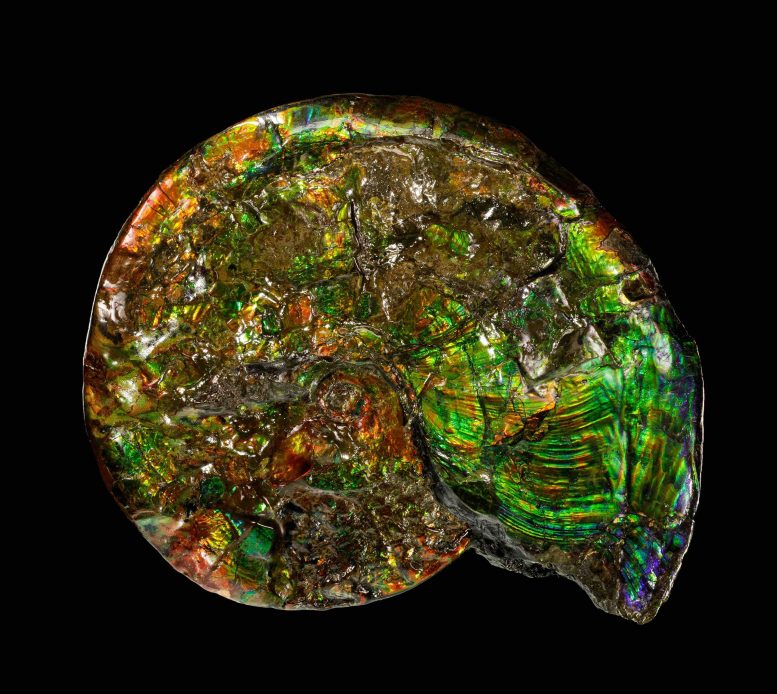
A beautiful example from Alberta, Canada of a biomineral — an intersection of minerals and life. Credit: ARKENSTONE/Rob Lavinsky
Distinguishing minerals based on how and when each kind appeared through Earth’s 4.5 billion+ year history
In earlier studies over more than a century, thousands of mineralogists worldwide have carefully documented almost 6,000 different “mineral species” based on their unique combinations of chemical composition and crystal structure. Dr. Hazen and colleagues took a different approach, emphasizing how and when each kind of mineral appeared through more than 4.5 billion years of Earth history.
“No one has undertaken this huge task before,” says Dr. Hazen, honored by the IMA with its 2021 medal for his outstanding achievements in mineral crystal chemistry, particularly in the field of mineral evolution.
“In these twin papers, we are putting forward our best effort to lay the groundwork for a new approach to recognizing different kinds of minerals. We welcome the insights, additions, and future versions of the mineralogical community.”
The papers’ new insights and conclusions include:
- Water has played a dominant role in the mineral diversity of Earth, involved in the formation of more than 80% of mineral species.
- Life played a direct or indirect role in the formation of almost half of known mineral species while a third of known minerals — more than 1,900 species — formed exclusively as a consequence of biological activities.
- Rare elements play a disproportionate role in Earth’s mineral diversity. Just 41 elements — together constituting less than 5 parts per million of Earth’s crust — are essential constituents in some 2,400 (over 42%) of Earth’s minerals. The 41 elements include arsenic, cadmium, gold, mercury, silver, titanium, tin, uranium, and tungsten.
- Much of Earth’s mineral diversity was established within the planet’s first 250 million years
- Some 296 known minerals are thought to pre-date Earth itself, of which 97 are known only from meteorites (with the age of some individual mineral grains estimated at 7 billion years — billions of years before the origin of our solar system)
- The oldest known minerals are tiny, durable zircon crystals, almost 4.4 billion years old
- More than 600 minerals have derived from human activities, including over 500 minerals caused by mining, 234 of them formed by coal mine fires
According to the research, 3,349 (59%) of IMA-approved mineral species are known to occur from just one process (paragenetic mode), 1,372 species (24%) from two processes, 458 (8%) from three processes, and the rest, 480 (8%), from four or more processes.
Diamonds, for example, composed of carbon, have originated in at least nine ways, including condensation in the cooling atmospheres of old stars, during a meteorite impact, and under hot ultra-high-pressure deep within the Earth.
These processes led to distinct diamond variants — e.g. stellar, impact, mantle, and ultra-high-pressure — which the authors designate as different “natural kinds.”
The authors propose that, complementary to the IMA-approved mineral list, new categorizations and groupings are created on the basis of a mineral’s genesis (paragenetic mode).
For example, science can group 400 minerals formed by condensation (whereby a substance transitions directly from gas to solid without passing through a liquid state) at volcanic fumaroles — openings in the Earth’s surface that emit steam and volcanic gasses.
The papers detail other considerations in the clustering and classification of minerals, such as the eon in which they formed. For example, Earth’s “Great Oxidation Event” about 2.3 billion years ago led new minerals to form at the planet’s near-surface.
And about 4.45 billion years ago, when water first appeared, the earliest water-rock interactions may have produced as many as 350 minerals in near-surface marine and terrestrial environments.
It appears too that hundreds of different minerals may have formed on Earth prior to the giant impact that vaporized much of our planet’s crust and mantle and led to the Moon’s formation about 4.5 billion years ago. If so, those minerals were obliterated, only to reform as Earth cooled and solidified.
“The sharp contrast between Earth’s large complement of minerals and the relative mineralogical parsimony of the Moon and Mercury, as well as the modest diversity found on Mars, stems from differing influences of water,” the authors say.
In addition to accidental mineral creations in mining fires, humanity has manufactured countless thousands of mineral-like compounds that don’t qualify for recognition by the IMA — building materials, semiconductors, laser crystals, specialty alloys, synthetic gemstones, plastic debris, and the like. All, however, are “likely to persist for millions of years in the geologic record, thus providing a clear sedimentary horizon that marks the so-called ‘Anthropocene Epoch’.”
Meanwhile, there are 77 “biominerals,” according to the paper, formed by a variety of metabolic processes — everything from corals, shells, and stinging nettles, to minerals in bones, teeth, and kidney stones.
Another 72 minerals derive directly or indirectly from the guano and urine of birds and bats. That list includes the rare mineral spheniscidite, which forms when the urine of penguins (order Sphenisciformes, hence the mineral name) reacts with clay minerals beneath a rookery on Elephant Island in the British Antarctic Territory.
Mineral evolution and the origins of life
The authors note that the formation of oceans, the extensive development of continental crust, and perhaps even the initiation of some early form of subduction (the process that drives plate tectonics today) in the early Hadean Eon 4.0 to 4.5 billion years ago, meant many important mineral-forming processes — and as many as 3,534 mineral species — occurred in Earth’s first 250 million years.
“If so, then most of the geochemical and mineralogical environments invoked in models of life’s origins would have been present 4.3 billion years ago,” they say.
If life is “a cosmic imperative that emerges on any mineral- and water-rich world,” the authors say, “then these findings support the hypothesis that life on Earth ?emerged rapidly, in concert with a vibrant, diverse Mineral Kingdom, in the earliest stages of planetary evolution.”
Extraterrestrial mineralogy
The work also points ways forward for future researchers and explorers:
“What mineral-forming environments occur on the Moon, Mars, and other terrestrial worlds? Enumerating paragenetic modes, and placing each mineral species into one or more of those categories, offers an opportunity to evaluate extraterrestrial mineralogy from a new perspective. If Mars had (or still has) a hydrological cycle, what mineralogical manifestations might we expect? For example, are there Martian hydrothermal sulfide deposits and, if so, were a variety of metals mobilized? On the other hand, if the Moon is truly dry, then what paragenetic processes are excluded? And do extraterrestrial bodies display paragenetic processes not seen on Earth, such as cryo-volcanism on Titan?”
The research was supported by the John Templeton Foundation, the NASA Astrobiology Institute ENIGMA team, and the Carnegie Institution for Science.
By the numbers
- 5,659: Mineral “species” recognized by the International Mineralogical Association at the time of this research. (That number has since risen to more than 5,800 species)
- 10,556: Combinations of minerals species and means of origin (“mineral kinds”)
- 40%: Proportion of mineral species that originated in more than one way
- 57: different physical, chemical, or biological processes that created Earth’s minerals
- 9: Minerals that came into being via 15 or more ways
- 480 (8%): Minerals that occur in four or more ways
- 458 (8%): Minerals that occur in three ways
- 1,372 (24%): Minerals that occur in two ways
- 3,349 (59%): Minerals that occur in just one process (paragenetic mode)
- 21: Ways in which pyrite (Fool’s Gold) has formed — the most of any mineral
- 9: Ways in which diamonds have formed in environments from outer space to deep Earth
- 80%: Minerals that water played a dominant role in creating
- 1,900 (about 1/3rd): Minerals formed exclusively by biological processes
- ~50%: Minerals in which biology played a direct or indirect role in creating
- 41: Rare elements (constituting less than 5 parts per million of Earth’s crust) involved in forming 2,400 (over 42%) of minerals
- 296: Minerals thought to pre-date Earth itself
- 97: Minerals known only from meteorites
- 7 billion years (pre-dating our solar system by billions of years): The age of individual mineral grains discovered in meteorites
- Up to 350: Minerals created in near-surface marine and terrestrial environments when water first appeared on Earth ~4.45 billion years ago
- 4.4 billion years: Age of the oldest known mineral created on Earth: zircon crystals
- 600+: Minerals derived from human activities, including 500+ caused by mining, 234 from coal mine fires
- 3,534: minerals thought to have formed within Earth’s first 250 million years
- 77: Biominerals (formed by metabolic processes)
- 72: Minerals derived directly or indirectly from the guano and urine of birds and bats
Comments
Anhuai Lu, President of the International Mineralogical Association, and Professor, School of Earth and Space Sciences, Peking University, Beijing, China (from a commentary published by American Mineralogist):
“The remarkable work of Hazen and Morrison provides a potential way to predictably discover possible minerals in nature. Minerals can be key to reconstructing the entire ‘past life’ and predicting the ‘future life’ of Earth,” and understanding mineral evolution “will offer a novel path for us to be able to explore deep space and search for extraterrestrial life and habitable planets in the future.”
Prof. Luca Bindi, Director, Department of Earth Sciences, University of Florence, Italy:
“When you think of truly groundbreaking scientists in mineralogy, you think of Robert M. Hazen and his pioneering ways of understanding how minerals evolve. Linking the concepts of minerals and evolution may seem counterintuitive but Hazen and Morrison have demonstrated once again that they are highly connected. Their two new papers demonstrate in a very elegant way the strong evidence that minerals are the most durable, information-rich objects we can study to understand the origin and evolution of planets. To paraphrase a famous Stephen Hawking quote: ‘Hazen and Morrison have become the bearers of the torch of discovery in our quest for knowledge of the mineral kingdom’.”
Prof. Patrick Cordier, Université de Lille / Institut Universitaire de France:
“This has been proclaimed the “Year of Mineralogy” by the IMA, part of the UN’s International Year of Basic Sciences for Sustainable Development. 2022 was chosen to mark the bicentenary of the death of René Just Haüy, a founding father of crystallography and modern mineralogy. By linking the properties of crystals and their microscopic structure, Haüy brought mineralogy into the physical sciences. At the same time, Antoine Lavoiser published the first modern treatise on chemistry. The framework defined by these two pioneers has remained in force until today: minerals are essentially described, classified, presented by their chemical composition and their crystallographic characteristics.
“Hazen and colleagues have changed this way of considering minerals. In addition to chemical composition and physical properties, Hazen emphasizes their conditions and contexts of formation, and a new way of seeing minerals appears. Minerals become witnesses, markers of the long history of matter that takes shape in supernova explosions, gathers in planetary systems in formation and even, on a planet like Earth, accompanies the emergence and development of life. Most scientists produce data, some are lucky enough to make discoveries, few are the ones who transform our view of the world. Hazen is one of them.”
Reference: “On the paragenetic modes of minerals: A mineral evolution perspective” by Robert M. Hazen and Shaunna M. Morrison, 1 July 2022, American Mineralogist.
DOI: 10.2138/am-2022-8099
Funding: John Templeton Foundation, NASA Astrobiology Institute, Carnegie Institution for Science





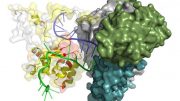



Be the first to comment on "Diverse Origins of Earth’s Minerals: Helping Find New Minerals, Habitable Planets, and Extraterrestrial Life"